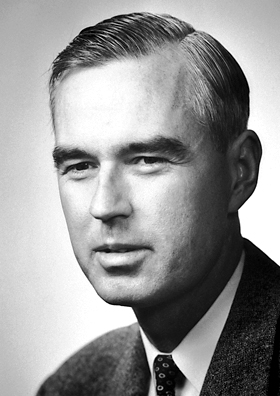The natural sciences are not just a tool to predict the future.
They are a reminder that the lives that we live daily are mere illusions, religious concepts such as Maya and Samsara come to mind.
We as individuals perceive nothing about the materials that we touch every day really work, nor more importantly how our brain and cell work.
Everything is magic out of our control.
The natural sciences allow us peek, with huge concentrated effort, into tiny little bits a little of those unknowns, and blow our minds as we notice that we don't know anything.
For all practical purposes in life, there is a huge macro micro gap. We are only able to directly perceive and influence the macro events. And through those we try to affect micro events. Because for good or bad, micro events reflect in the macro world.
It is as if we live in a different plane of existence above molecules, and below galaxies. The hierarchy of Figure "xkcd 435: Fields arranged by purity" puts that nicely into perspective, shame it only starts at the economical level, not going up to astronomy.
The great beauty of science is that it allows us to puncture through some of the layers of reality, either up or down, away from our daily experience.
And the great beauty of artificial intelligence research is that it allows to peer deeper into exactly our layer of existence.
Every one or two weeks Ciro Santilli remembers that he and everything he touches are just a bunch of atoms, and that is an amazing feeling. This is Ciro's preferred source of Great doubt. Another concept that comes to mind is when you see it, you'll shit bricks.
Perhaps, the feeling of physics and the illusion of life reaches its peak in molecular biology.
Just look at your fucking hand right now.
Do you have any idea of each of the cells in it work? Isn't is at least 100 times more complex than the materials of the table you hand is currently resting on?
This is the non-science fiction version of the lotus-Eater Machine.
Alan Watts's "Philosopher" talk mentions related ideas:
The origin of a person who is defined as a philosopher, is one who finds that existence itself is exceedingly odd.
The toddler of a friend of Ciro Santilli's wife asked her mum:Our perception of the macroscopic world is so magic that children have to learn the difference between living and non-living things.
James Somers put it very well as well in his article I should have loved biology by James Somers, this quote was brought to Ciro's attention by Bert Hubert's website[ref].The same applies to other natural sciences.
I should have loved biology but I found it to be a lifeless recitation of names: the Golgi apparatus and the Krebs cycle; mitosis, meiosis; DNA, RNA, mRNA, tRNA.In the textbooks, astonishing facts were presented without astonishment. Someone probably told me that every cell in my body has the same DNA. But no one shook me by the shoulders, saying how crazy that was. I needed Lewis Thomas, who wrote in The Medusa and the Snail:For the real amazement, if you wish to be amazed, is this process. You start out as a single cell derived from the coupling of a sperm and an egg; this divides in two, then four, then eight, and so on, and at a certain stage there emerges a single cell which has as all its progeny the human brain. The mere existence of such a cell should be one of the great astonishments of the earth. People ought to be walking around all day, all through their waking hours calling to each other in endless wonderment, talking of nothing except that cell.
Alan Watts' "Philosopher" talk (1973)
Source. Lecture given at UCLA on 1973-02-21. Some key quotes from the talk:The origin of a person who is defined as a philosopher, is one who finds that existence itself is exceedingly odd.
Quantum mechanics is quite a broad term. Perhaps it is best to start approaching it from the division into:
- non-relativistic quantum mechanics: obviously the simpler one, and where you should start
- relativistic quantum mechanics: more advanced, and arguably "less useful"
Key experiments that could not work without quantum mechanics: Section "Quantum mechanics experiment".
Mathematics: there are a few models of increasing precision which could all be called "quantum mechanics":
Ciro Santilli feels that the largest technological revolutions since the 1950's have been quantum related, and will continue to be for a while, from deeper understanding of chemistry and materials to quantum computing, understanding and controlling quantum systems is where the most interesting frontier of technology lies.
In many important applications, what you have to solve is not just a single partial differential equation, but multiple partial differential equations coupled to each other. This is the case for many key PDEs including:
Existence and uniqueness of solutions of ordinary differential equations by  Ciro Santilli 37 Updated 2025-07-16
Ciro Santilli 37 Updated 2025-07-16
The Holy Hand Grenade of Antioch scene from Monty Python and the Holy Grail
. Source. When a young Ciro Santilli played Worms Armageddon, he almost shat himself of laughter when he first threw a Holy Grenade. Little did he know it was actually a Monty Python reference.You need separate accounts for different countries: money.stackexchange.com/questions/73361/two-banks-in-two-countries-is-it-possible-to-have-a-unique-paypal-account it's a pain.
The Insane Engineering of DLP by Zack Freedman (2022)
Source. This idealization does not seems to be possible at all in the context of Maxwell's equations with pointlike particles.
No open signup it seems. TODO CV of owner.
They are making a proof assistant to integrate into the website: github.com/bookofproofs/fpl/, reminds Ciro Santilli of website front-end for a mathematical formal proof system.
There are unlisted articles, also show them or only show them.
